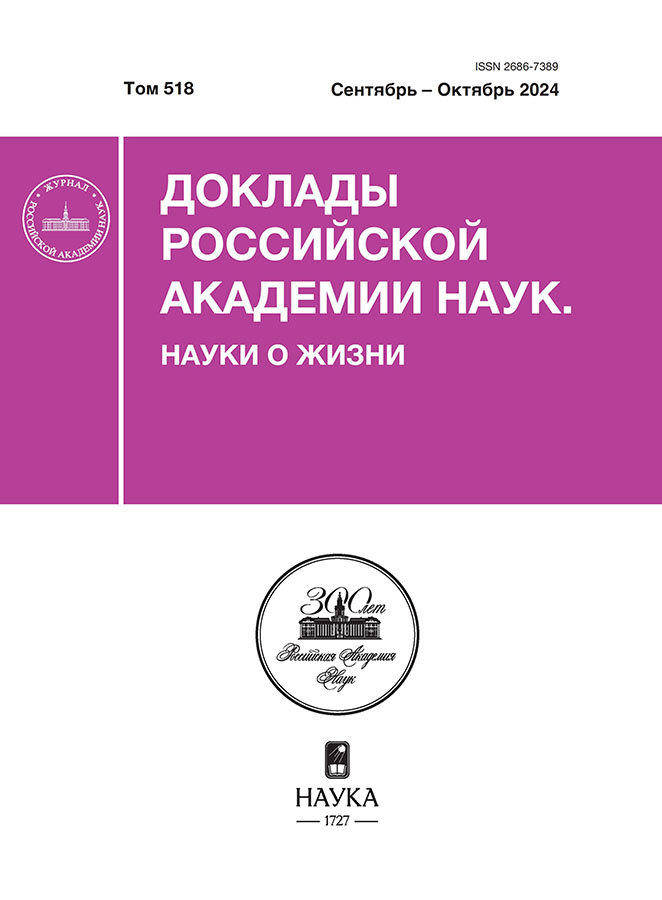Tip-Tugai cave – the first cave hyena Crocuta spelaea (Goldfuss, 1823) den in the Urals
- Autores: Khantemirov D.R.1, Kochnev А.V.1, Strukova Т.V.2, Gimranov D.О.2, Kosintsev P.А.2
-
Afiliações:
- Ural Federal University named after the First President of Russia B.N. Yeltsin
- Institute of Plant and Animal Ecology UB RAS
- Edição: Volume 518, Nº 1 (2024)
- Páginas: 26-30
- Seção: Articles
- URL: https://ruspoj.com/2686-7389/article/view/651394
- DOI: https://doi.org/10.31857/S2686738924050052
- ID: 651394
Citar
Texto integral
Resumo
The new site of Tip-Tugai Cave (52°59’28.6”N, 57°00’22.3”E) is described. The bone-bearing layer is dated at MIS 3 isotope stage based in the fauna of small mammals. Finds of abundant remains of Crocuta spelaea individuals of different ages and the presence of large herbivores bones with hyena gnaw marks indicate that the Tip-Tugai Cave was used as a hyena den in the Late Pleistocene. This is the first described cave hyena den in the Urals.
Palavras-chave
Texto integral
Sobre autores
D. Khantemirov
Ural Federal University named after the First President of Russia B.N. Yeltsin
Autor responsável pela correspondência
Email: hantemirov.d@mail.ru
Rússia, Yekaterinburg
А. Kochnev
Ural Federal University named after the First President of Russia B.N. Yeltsin
Email: hantemirov.d@mail.ru
Rússia, Yekaterinburg
Т. Strukova
Institute of Plant and Animal Ecology UB RAS
Email: hantemirov.d@mail.ru
Rússia, Yekaterinburg
D. Gimranov
Institute of Plant and Animal Ecology UB RAS
Email: hantemirov.d@mail.ru
Rússia, Yekaterinburg
P. Kosintsev
Institute of Plant and Animal Ecology UB RAS
Email: hantemirov.d@mail.ru
Rússia, Yekaterinburg
Bibliografia
- Jimenez E., Germonpré M., Boudin M. New insights into cave hyena ethology and the implications for territorial competition with hominins in Late Pleistocene north‐west Europe: the case of Caverne Marie‐Jeanne (Belgium) // Quaternary Science. 2022. V. 37. №4. P. 593–611.
- Барышников Г.Ф. Пещерная гиена (Crocuta spelaea): тафономия и адаптация // Актуальные вопросы евразийского палеолитоведения. Новосибирск: Издательство Института археологии и этнографии СО РАН. 2005. С. 15–16.
- Барышников Г.Ф. Верещагин Н.К. Краткий обзор четвертичных гиен (семейство Hyaenidae) России и сопредельных территорий // Труды Зоологического института РАН. 1996. Т. 270. С. 7–65.
- Lewis M.E., Werdelin L. A revision of the genus Crocuta (Mammalia, Hyaenidae) // Palaeontographica. 2022. V. 322. № 1–4. P. 1–115.
- Diedrich C.G. Late Pleistocene Crocuta crocuta spelaea (Goldfuss, 1823) clans as prezewalski horse hunters andwoolly rhinoceros scavengers at the open air commuting den and contemporary Neanderthal camp site Westeregeln (central Germany) // Journal of Archaeological Science. 2012. V. 39. №6. P.1749–1767.
- Harrison R.A. The Uphill Quarry caves, Weston-Super-Mare, a reappraisal // Proceedings of the University of Bristol Spelaeological Society. 1977. V. 14. №3. P. 233–254.
- Кропачева Ю.Э. Пещерная гиена на Урале // Материалы конференции молодых ученых, 31 марта – 4 апреля 2003 года. Екатеринбург: Изд-во «Академкнига». 2003. С. 96–98.
- Кузьмина С.А. Фаунистические данные по позднепалеолитической стоянке Смеловская II на Южном Урале // Плейстоценовые и голоценовые фауны Урала. Челябинск. 2000. С. 137–153.
- Rivals F., Baryshnikov G.F., Prilepskaya N.E., Belyaev R.I. Diet and ecological niches of the Late Pleistocene hyenas Crocuta spelaea and C. ultima ussurica based on a study of tooth microwear // Palaeogeography, Palaeoclimatology, Palaeoecology. 2022. V. 601. P. 111–125.
- Diedrich C.G. An Ice Age spotted hyena Crocuta crocuta spelaea (Goldfuss 1823) population, their excrements and prey from the Late Pleistocene hyena den of the Sloup Cave in the Moravian Karst, Czech Republic // Historical Biology. 2012. V. 24. №2. P. 161–185.
- Diedrich C.G., Žák K. Prey deposits and den sites of the Upper Pleistocene hyena Crocuta crocuta spelaea (Goldfuss, 1823) in horizontal and vertical caves of the Bohemian Karst (Czech Republic) // Bulletin of Geosciences. 2006. V. 81. №4. P. 237–276.
- Kosintsev P.A., Bachura O.P. Late Pleistocene and Holocene mammal fauna of the Southern Urals // Quaternary International. 2013. V. 284. P. 161–170.
- Danukalova G. et al. Quaternary deposits and biostratigraphy in caves and grottoes located in the Southern Urals (Russia) // Quaternary International. 2020. V. 546. P. 84–124.
- Kruuk H. The spotted hyena: a study of predation and social behavior. Chicago: University of Chicago Press. 1972. 335 p.
- Jimenez I.J. et al. Ontogenetic dental patterns in Pleistocene hyenas (Crocuta crocuta Erxleben, 1777) and their palaeobiological implications // International Journal of Osteoarchaeology. 2019. V. 29. №5. P. 808–821.
- Diedrich C.G. Europe’s first Upper Pleistocene Crocuta crocuta spelaea (Goldfuss 1823) skeleton from the Koněprusy Caves: a hyena cave prey depot site in the Bohemian Karst (Czech Republic) // Historical Biology. 2012. V. 24. №1. P. 63–89.
Arquivos suplementares











